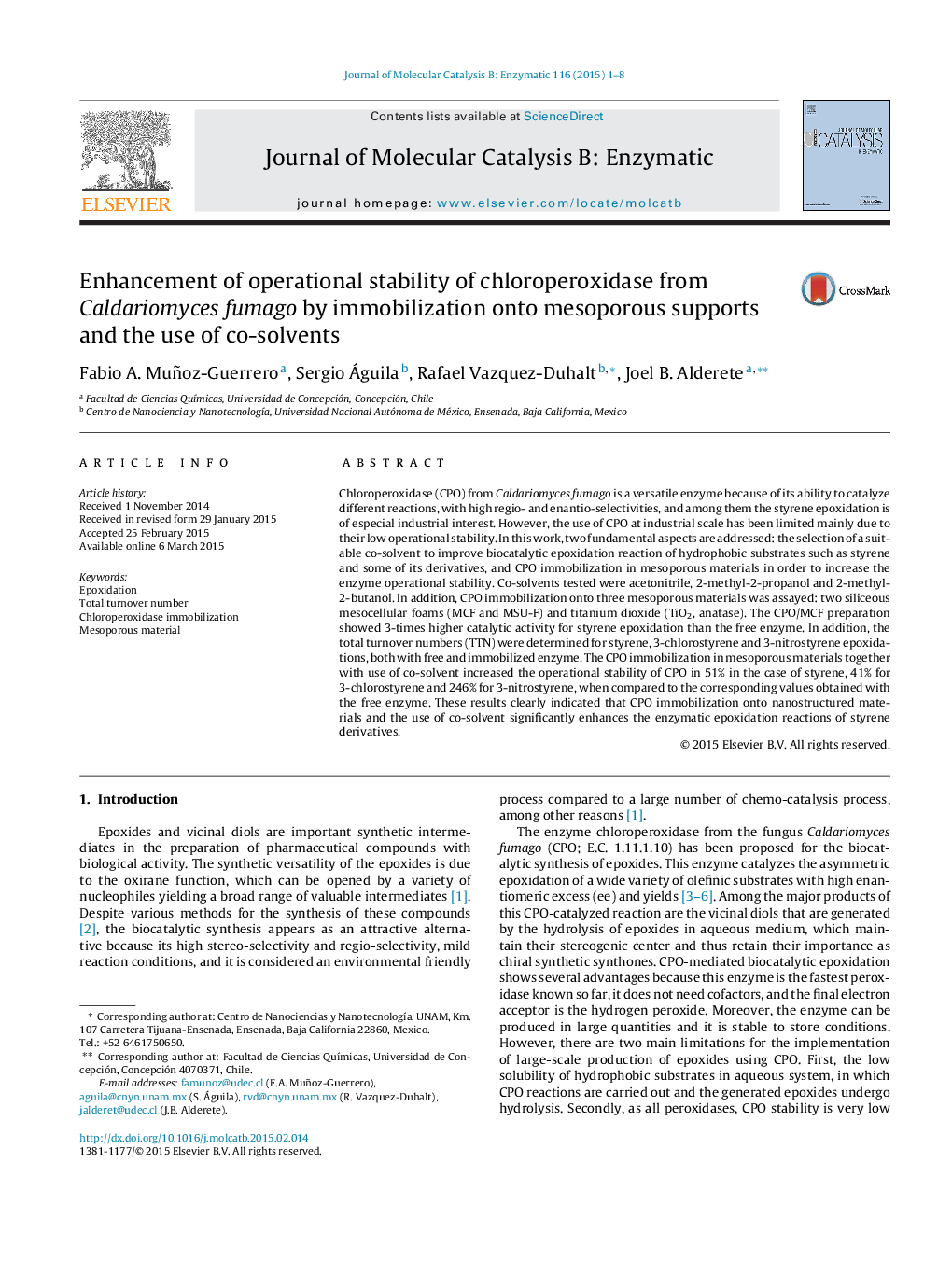| کد مقاله | کد نشریه | سال انتشار | مقاله انگلیسی | نسخه تمام متن |
|---|---|---|---|---|
| 69377 | 48761 | 2015 | 8 صفحه PDF | دانلود رایگان |

• CPO catalytic activity and operational stability were enhanced.
• CPO was immobilized successfully in MCF, MSU-F and TiO2 by adsorption.
• The effect of three co-solvents was evaluated on immobilized and free CPO.
• CPO-mediated epoxidation of styrene and some derivatives were characterized.
Chloroperoxidase (CPO) from Caldariomyces fumago is a versatile enzyme because of its ability to catalyze different reactions, with high regio- and enantio-selectivities, and among them the styrene epoxidation is of especial industrial interest. However, the use of CPO at industrial scale has been limited mainly due to their low operational stability. In this work, two fundamental aspects are addressed: the selection of a suitable co-solvent to improve biocatalytic epoxidation reaction of hydrophobic substrates such as styrene and some of its derivatives, and CPO immobilization in mesoporous materials in order to increase the enzyme operational stability. Co-solvents tested were acetonitrile, 2-methyl-2-propanol and 2-methyl-2-butanol. In addition, CPO immobilization onto three mesoporous materials was assayed: two siliceous mesocellular foams (MCF and MSU-F) and titanium dioxide (TiO2, anatase). The CPO/MCF preparation showed 3-times higher catalytic activity for styrene epoxidation than the free enzyme. In addition, the total turnover numbers (TTN) were determined for styrene, 3-chlorostyrene and 3-nitrostyrene epoxidations, both with free and immobilized enzyme. The CPO immobilization in mesoporous materials together with use of co-solvent increased the operational stability of CPO in 51% in the case of styrene, 41% for 3-chlorostyrene and 246% for 3-nitrostyrene, when compared to the corresponding values obtained with the free enzyme. These results clearly indicated that CPO immobilization onto nanostructured materials and the use of co-solvent significantly enhances the enzymatic epoxidation reactions of styrene derivatives.
Figure optionsDownload as PowerPoint slide
Journal: Journal of Molecular Catalysis B: Enzymatic - Volume 116, June 2015, Pages 1–8